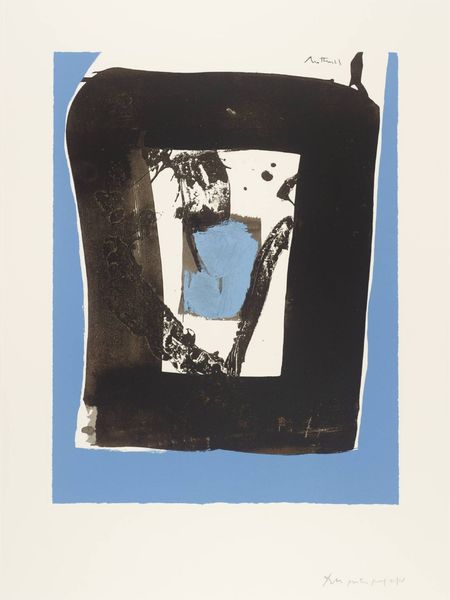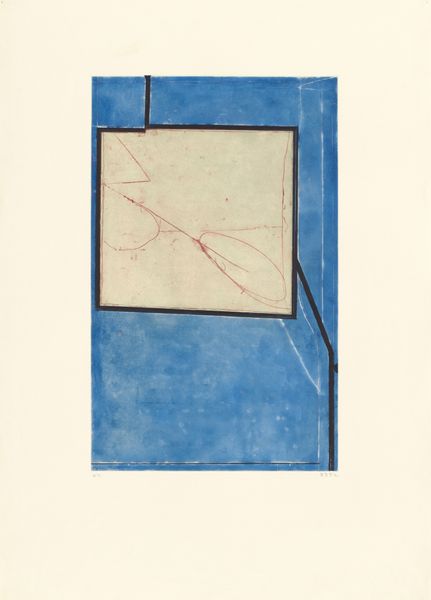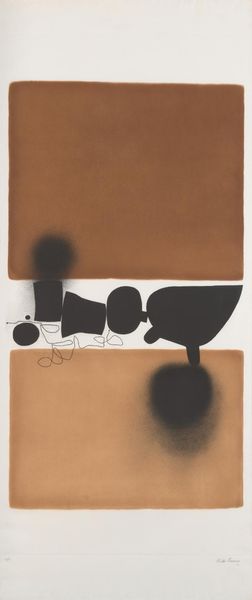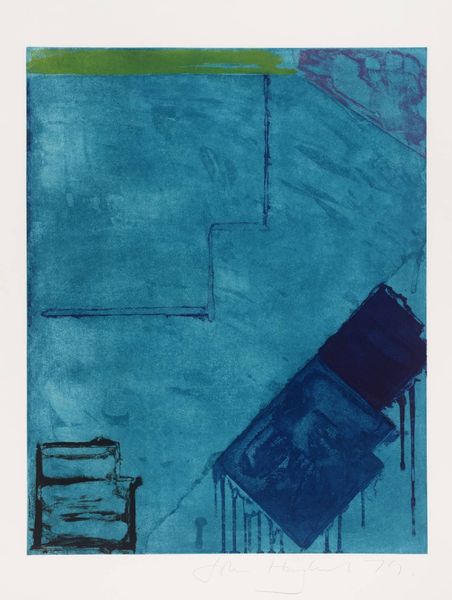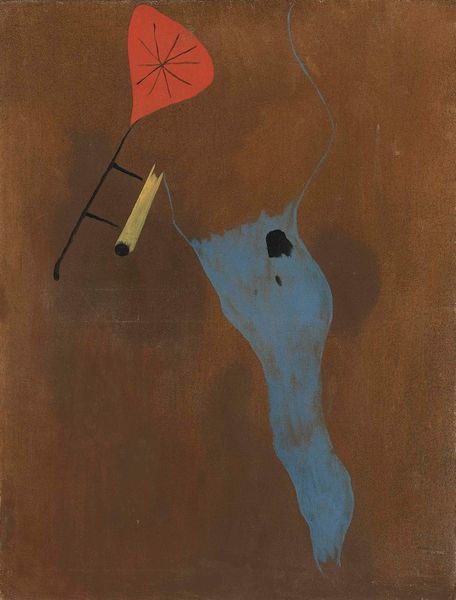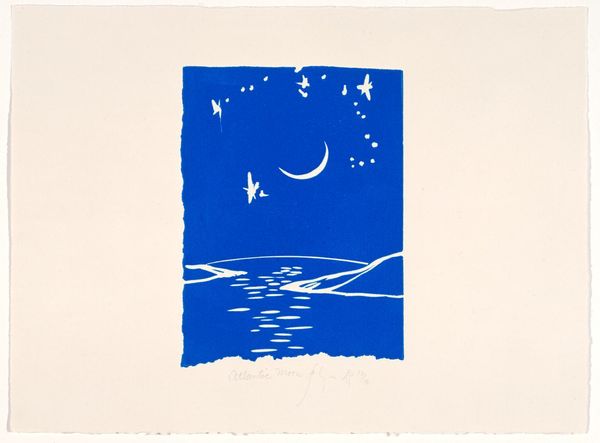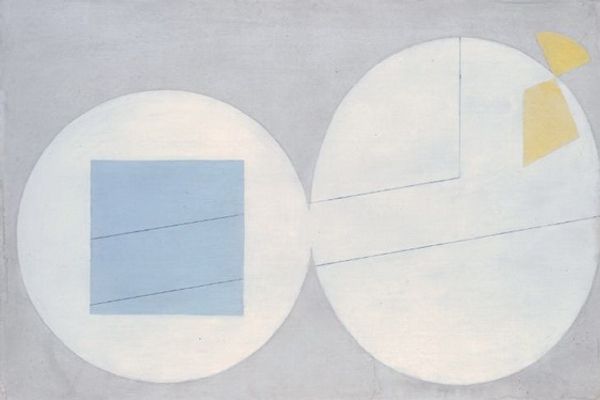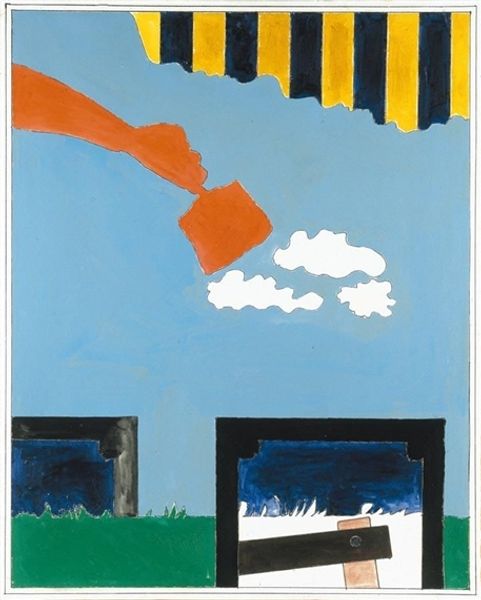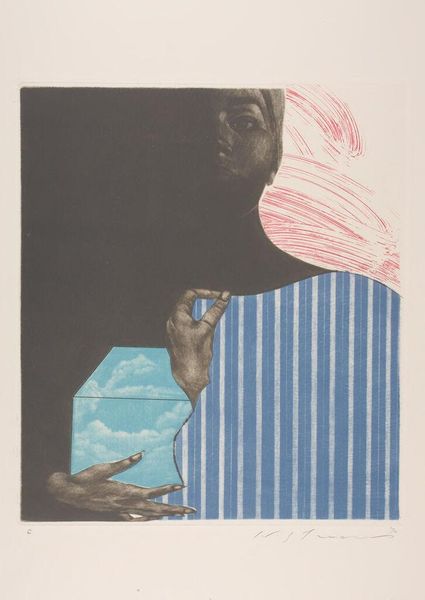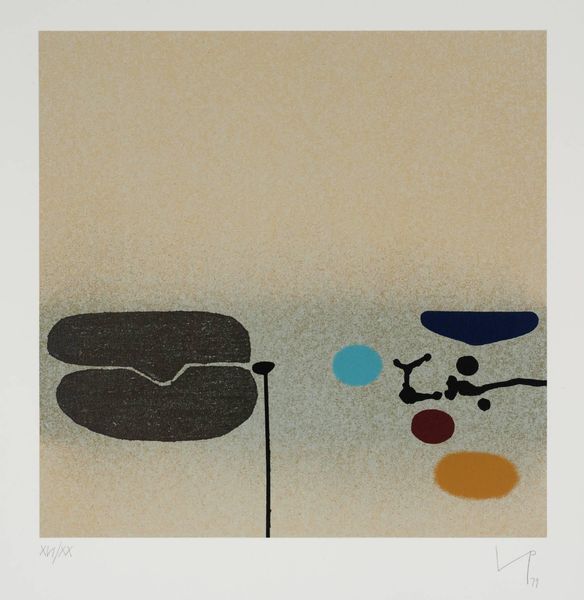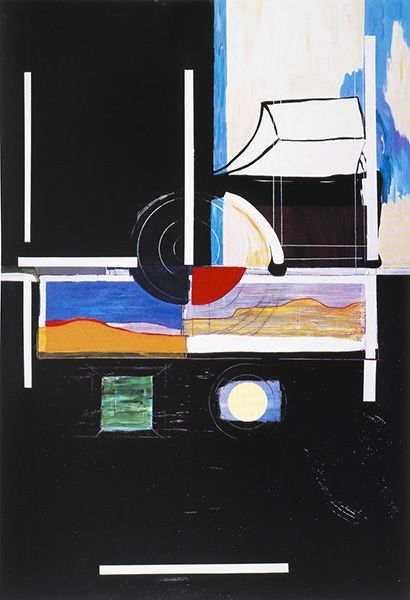
drawing, paper, ink
#
drawing
#
blue ink drawing
#
landscape
#
paper
#
abstract
#
ink
#
geometric
#
abstraction
#
sketchbook drawing
#
modernism
Copyright: Public Domain: Artvee
Curator: Welcome! Here we have Mikuláš Galanda’s “Landscape with a chair”, created between 1929 and 1930 using ink on paper. Editor: My first impression is stark. It's deceptively simple but carries an aura of unease, a melancholic stillness. Curator: Precisely! Galanda was deeply concerned with material honesty. He used readily available materials, like ink and paper, showcasing the act of drawing itself. The simplified forms reflect the rise of industrial design influencing the production of everyday objects. Editor: I'm drawn to the symbols he uses. The chair, so starkly outlined, seems to represent absence or perhaps a lost domesticity. And that intense blue… it's almost a cloud itself, heavy with unspoken emotion. The artist might be tapping into cultural memories around domesticity and absence through common items depicted unusually. Curator: The abstract landscape itself is significant. Galanda was moving away from representational art, aligning himself with the European avant-garde. He stripped down the landscape to its bare essentials, investigating how abstraction itself could convey meaning, the making became the focus rather than illusion. Editor: I can see that tension between representation and abstraction at play. Even those simple clouds are more evocative than a detailed landscape might be. This interplay, of known imagery presented abstractly creates something quite jarring. It almost mocks our ingrained sense of perception. Curator: It’s also worth thinking about how readily available and commonplace both the ink and paper mediums would be for an artist during the interwar years. Were those materials chosen specifically, based on availability, or were they preferred for artistic expression? Editor: Indeed. Ultimately, the simplicity directs the gaze toward the symbols, almost pleading to decipher the enigma of an unfulfilled everyday life. I leave feeling that those stark figures almost represent something unachievable or at the very least unattainable to Galanda and that culture from which he emerged. Curator: Thank you! Viewing Galanda's piece from the point of view of materials provides important insight into how abstraction developed through material choices as much as it did through thematic explorations.
Comments
No comments
Be the first to comment and join the conversation on the ultimate creative platform.
